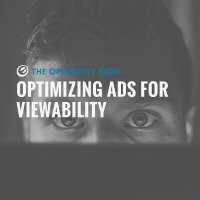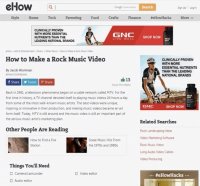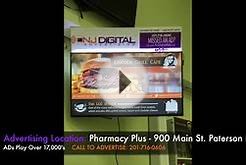 You wouldnŌĆÖt buy a TV commercial on a channel with no viewers, or a billboard facing a road with no passersby, would you? By the same logic, chances are that you probably wouldnŌĆÖt spend money on a digital ad that would never be seen. While common sense might suggest that this is true, according to Google, only 50% of display ads on publishersŌĆÖ sites are actually considered ŌĆ£viewableŌĆØ. That means that half of the ad space that marketers are spending their valuable budget on may never actually be seen.
You wouldnŌĆÖt buy a TV commercial on a channel with no viewers, or a billboard facing a road with no passersby, would you? By the same logic, chances are that you probably wouldnŌĆÖt spend money on a digital ad that would never be seen. While common sense might suggest that this is true, according to Google, only 50% of display ads on publishersŌĆÖ sites are actually considered ŌĆ£viewableŌĆØ. That means that half of the ad space that marketers are spending their valuable budget on may never actually be seen.
For that reason, the concept of ŌĆ£viewabilityŌĆØ is transforming the way that digital advertising is bought and sold, becoming the future currency of the industry. To measure whether or not an ad had the opportunity to be seen, the Media Ratings Council (MRC) set a standard, which says that a display ad can be considered ŌĆ£viewableŌĆØ if at least 50% of its pixels are in view for a minimum of one second. For video ads, that standard is 50% for a minimum of two continuous seconds.
Tracking whether or not a given ad was actually seen (rather than just served) gives publishers an opportunity to boost ad revenue by creating more value for advertisers out of the display inventory on their site. To take advantage of this revenue opportunity, publishers should be thinking about how to maximize viewable impressions on their sites.
Here are four tips to help publishers optimize for viewability:
1. Test methods to keep ads in-view for a longer duration of time.
eHow, a popular online how-to guide, used OptimizelyŌĆÖs integration with Moat, an attention measurement platform, to test a traditional banner ad against a ŌĆ£stickyŌĆØ banner ad. The sticky version of the ad would remain visible as the reader scrolled down the page until a certain depth, at which point it would disappear. By running the test, eHow was able to conclude that the sticky banner resulted in much higher viewability than the original, making that ad space immediately more valuable to advertisers and allowing eHow to derive more revenue from the unit.
 Original Original
Banner fixed to top of page and disappears if visitor scrolls down the page. |
Variation
Sticky banner stays in view as visitor scrolls down the page. |
2. Place ads near areas of the page with high engagement.
Publishers should consider testing ad units in areas that are likely to generate high engagement. If you are drawing visitors toward a specific piece of content such as a hero article or a video modal, consider optimizing that content and then placing ads next to that section for higher engagement and ad recall.Discovery Communications tested a method to bring static images to life on their video content page by using a panning technique called the ŌĆ£Ken Burns EffectŌĆØ. The result was a 6% lift in click throughs on the content. They then used Optimizely with Moat to understand the impact of the experiment on their key ad viewability and attention metrics. After running experiments like this one to better understand and improve viewability on their site, Ed Clinton, Sr. Product Manager at Discovery said, ŌĆ£I would actually say that the Moat integration has been the most successful part of our A/B testing.ŌĆØ
3. Consider testing different ad sizes.
In aiming to get 50% or more of the ad creative in view ŌĆö the requirement for an ad to be considered ŌĆ£viewableŌĆØ ŌĆö publishers should test different ad sizes. A study by Google found that on average, vertical ad units are more likely to be viewed than square or horizontal ads.With that said, certain sizes will be more effective at achieving viewability based on the page layout and placement of the ad. Publishers should plan to test several combinations of ad sizes and page layouts to determine the optimal viewability for their own site.
4. Aim for ad spaces that are less cluttered.
A study by IPG Media Lab tested ad spaces with one, two, and four ad units on the page. The findings were that less ads in the space resulted in an increase in both ad recall and message recall. If a site has multiple ad units cluttering a specific area, publishers should consider testing a decluttered version of the page, either spacing out the units or removing some altogether, in order to increase overall viewability for their display inventory.
As viewability continues to gain momentum as the new currency in digital advertising, publishers should be thinking ahead about how to maximize viewable impressions on their sites. OptimizelyŌĆÖs integration with Moat can help, by giving insight into which variations of a page result in the highest viewable impressions. By optimizing for viewability, publishers can expect to increase ad revenue while providing a better experience for their advertisers.







